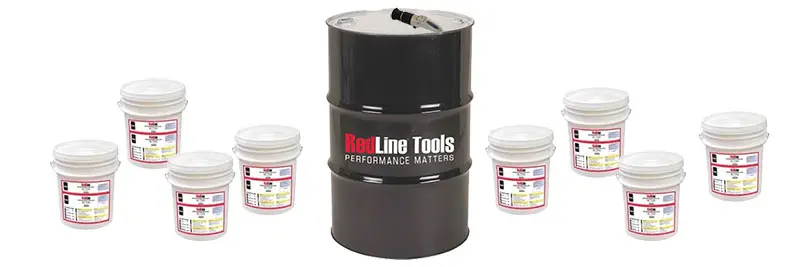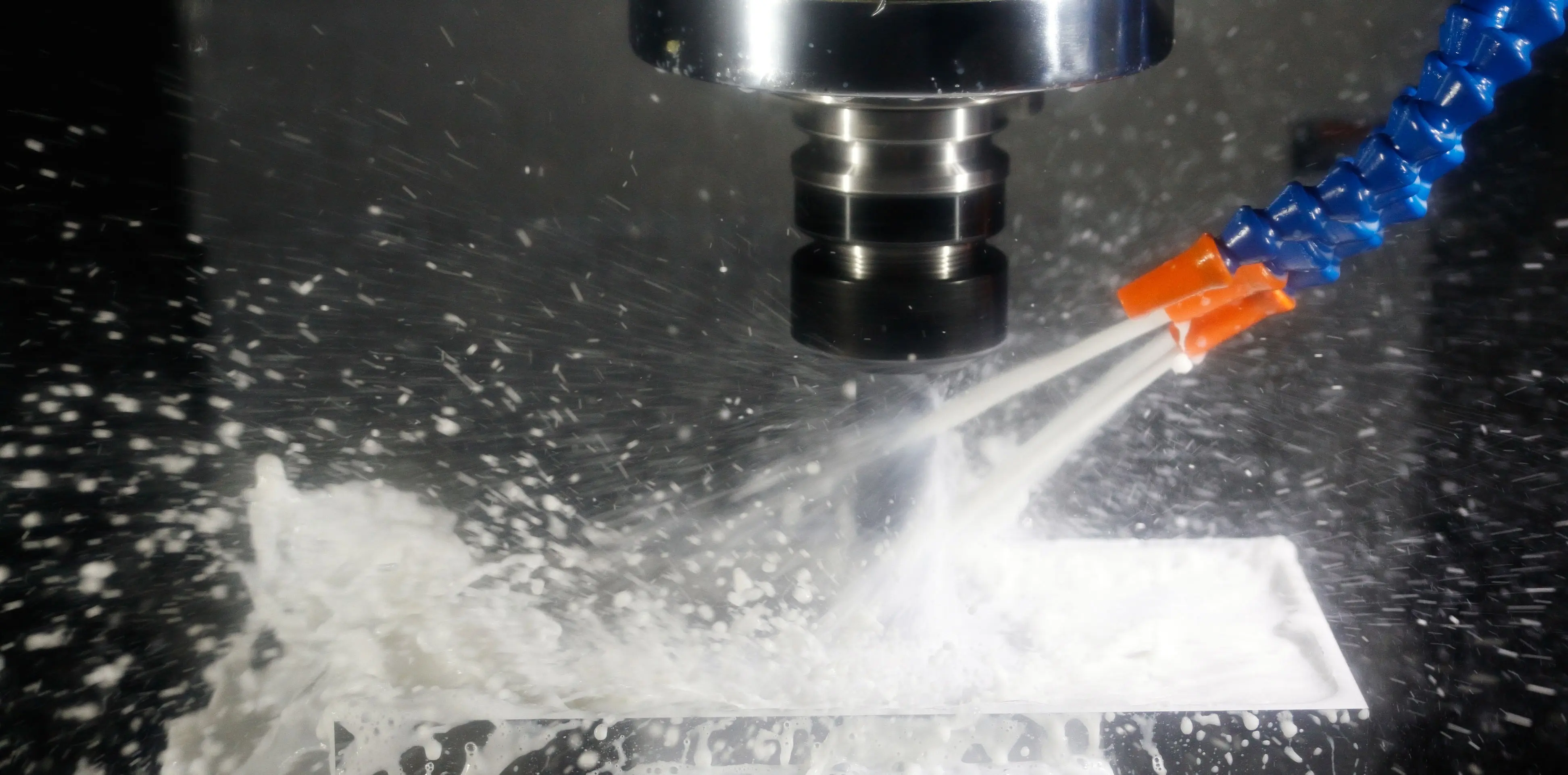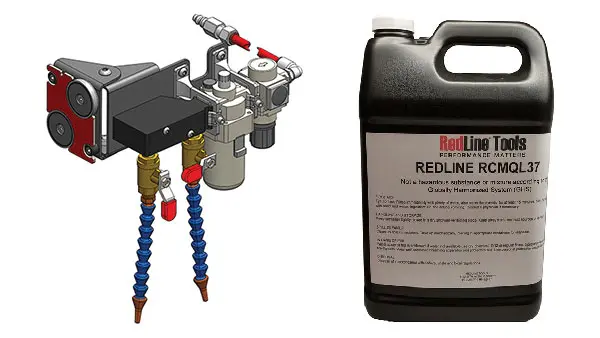Product Links
Lubricants for CNC Machining Centers and Lathes
Coolant Types
Lubrication is the single most important thing in machine maintenance. The lack or imbalance of lubricant is the number one cause of machine failure. If the moving parts are not lubricated, they will fail. Your machine will have lubrication specs and it is important to follow those to insure you are using the correct type and amount for your machine.
Coolants come in three categories: soluble oils, synthetic fluids and semi-synthetic fluids. All lubricants will have additives that enhance lubricity and inhibit rust and bacteria. RedLine Tools offers a wide selection of both coolants and oils to fill your needs. Most of todays machining centers use water-based coolants except for some Swiss machines that use cutting oil exclusively.
Water-Based Coolants
Known as emulsifiable cutting fluids, are mixed with water to form a milky emulsion that is a good choice for general purpose cutting. The downside with synthetic coolants is they will allow bacteria to grow causing a bad smell when left out for a long period of time. The proper mixture and changing interval is necessary to maintain good hygiene and proper performance. This coolant type has additives to inhibit bacterial growth and enhance lubricity. Additives include “EP” extreme pressure chlorine, sulfur and phosphorus compounds. With water-soluble coolants, it is very important to follow the manufactures mixture recommendations and use “softened water” to minimize the contaminants. The use of a reverse osmosis system is also helpful to maintain water purity. Concentration should be checked with a refractometer. Also, use a tramp skimmer to remove sludge keeping bacterial growth to a minimum.
RedLine has a good selection of water-based coolants:
*NOTE* Click on the links for product brochure and SDS.
Synthetic Fluids
Synthetic coolants are free of oil but use synthetic
compounds to regain the proper lubricity. Because they are free of natural
oils, they are free from bacterial issues. Synthetic coolants have been known
to be the least lubricious of the three.
RedLine offers a couple of choices for synthetic coolants:
RC3750
*NOTE* Click on the links for product brochure and SDS.
Semi-Synthetic Fluids
This coolant type is a mixture of synthetic compounds and
oil. However, the oil is in a much reduced amount to the common water-based
coolants. This mixture provides the lubricity of emulsifiable fluids with fewer
of the bacterial issues associated with them.
RedLine offers a couple of choices for semi-synthetic coolants:
RC3500, RC2300
*NOTE* Click on the links for product brochure and SDS.
Cutting Oils
Cutting oils are intended for use in swiss-style machines as well as older machining equipment such as gear hobs, broaches and hones, gun drills, etc.Applying The Coolant
Nearly all machining centers use through-the-tool coolant dispersal. It is beneficial to use this method as it applies the coolant where it is needed. Through-the-Tool cutting tools are very common today and it is important to use this type of tooling where possible. For your convenience, RedLine Tools has a full line of through-the-tool cutting tools. RedLine Tools.
The latest machining centers feature the use of high-pressure coolant (HPC) dispersal. It is highly recommended as it has several benefits including, improving tool life, provides increased speeds and feeds, and helps eliminate any issues with chip control. Pressures up to 1,000 psi are common. If you have an older machine without this feature, investing in a HPC system with save you money in the long run.
Minimum-Quantity Lubrication
Sometimes the best coolant is no coolant at all. Some new high-tech tool coatings are designed to cut hardened steels, alloy steels and some cast irons with little or no coolant. This allows for much faster speeds and feeds with less fluid and maintenance cost. The ideal solution in this case are the Minimum Quantity Lubrication (MQL) units. RedLine Tools has a portable unit designed to move from machine to machine as the need arises.
Why Use A Refractometer For CNC Machining?
Refractometers work by the principal of refraction. As light passes from air through an aqueous solution its speed slows and path changes or bends. That is what creates the “bent” appearance of something slightly submerged in water. As the amount of solids in solution increases, the light propagation slows increasing the angle of refraction. Metalworking refractometers use this principle and measure the angle on a scale called the Brix scale or by specific gravity depending on the manufacturer.
To read the refractometer:
- Clean the prism with water and dry
- Calibrate the unit with diluted water placing a drop on the prism at room temperature and looking through the eyepiece, scale to zero.
- Place a drop of your solution onto the prism, close the flap and take the reading.
- Multiply the reading by the coolant’s refractometer factor to get your percentage.
Follow your machines recommended concentration percentage and adjust the amount of coolant accordingly.







